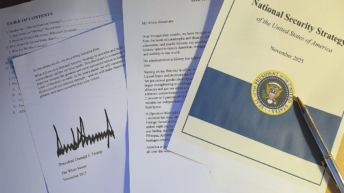
Global economic stability hinges on reliable payment systems, efficient banking, smooth-functioning supply chains, trade, tourism, and financial flows. The current international architecture, however, favours the West, leaving many countries vulnerable. To address this imbalance, some nations are forming alliances to challenge the status quo and build a more equitable global order.
The BRICS nations envision a collaborative approach to creating a resilient and inclusive multilateral system, which could lead to more decentralised and democratic global governance. Jim O’Neill, a renowned economist, coined the term BRIC (Brazil, Russia, India, and China) in 2001 to describe these emerging economies, which he predicted would surpass the leading Western economies in economic power.
The BRIC concept proved its resilience during the global financial crisis, as these economies fared better than their Western counterparts. Despite their cultural and geographical differences, the BRIC nations united to challenge the existing world order. In 2009, BRIC officially became a political and economic forum with its first summit in Russia. South Africa joined in 2010, expanding the group to BRICS and reflecting its growing ambitions.
Since the 2000s, the BRICS nations have surpassed the G7 in terms of global GDP, measured by purchasing power parity. This economic dominance has grown significantly, with BRICS countries now accounting for a larger share of global GDP than the G7. This shift underscores the rising influence of emerging economies and presents a unique opportunity for BRICS to democratise global markets.
India’s leadership in establishing the New Development Bank (NDB) demonstrates its proactive role in shaping international financial frameworks. By leveraging its BRICS membership, India has addressed critical global issues such as counter-terrorism, climate change, and UN Security Council reform. As India’s share of global growth is expected to increase further, international expectations of its contribution to global economic momentum are also rising.
India’s growing economic influence within BRICS provides a strategic platform to promote the internationalisation of the Indian rupee. India can strengthen its international market presence by advocating using the rupee in global transactions. The recent expansion of BRICS to include Egypt, Ethiopia, Iran, Saudi Arabia, and the UAE marks a significant milestone in the group’s evolution from a geo-economic framework to a geopolitical force. This expansion not only strengthens the collective bargaining power of the Global South but also aligns with India’s strategic interests in promoting a multipolar world order.
It also underscores India’s approach to foreign policy, positioning BRICS as a platform for balanced dialogue rather than an anti-Western bloc. Including new BRICS+ members can open diverse markets for Indian goods and services, increasing trade opportunities. With more countries involved, the potential for investment inflows into India could rise, driven by increased economic collaboration within the expanded BRICS. The new member states can facilitate technology transfer and innovation sharing, benefitting India’s tech sector. India can leverage its position within the expanded BRICS+ to bolster its role as a significant player in the Global South and enhance its global economic and diplomatic stature.
BRICS+ has become a ubiquitous term that creates a formidable economic and demographic force. BRICS+ now commands around 36% of global income, surpassing the G7’s 31%. It represents 46% of the world’s population compared to the G7’s 10%. This economic and human capital powerhouse further strengthens its position, controlling over 40% of global oil and 36% of gas production. This presents a potential avenue for developing countries in the “Global South” to gain more significant influence in international affairs, establish new economic partnerships, secure financing free from external pressures, and reduce dependence on Western powers. The push towards de-dollarisation among BRICS+ members creates an environment where alternative currencies, including the INR, can thrive. India can promote the use of the INR in trade and financial transactions, aligning with the global trend away from dollar dependency.
The bloc deliberated on promoting local BRICS currencies for trade and financial transactions. This reduces vulnerability to fluctuations in the US dollar and lessens the power Western institutions hold through control over global financial systems. In the face of cascading crises—devastating pandemics, escalating conflicts, and crippling economic distress—frustrations with the dominance of the US dollar are mounting. IMF’s Currency Composition of Official Foreign Exchange Reserves (COFER) data report states that the greenback accounted for 59.2% of globally allocated foreign exchange reserves in the third quarter, down from a reserve of more than 70% since the beginning of the millennium. Terminating the petrodollar agreement between Saudi Arabia and the US signifies a significant shift in the international economy and global power dynamics.

A rise in the share of non-traditional currencies, including the Australian dollar, Canadian dollar, Chinese Renminbi, South Korean Won, Singaporean dollar and Nordic currencies, has accompanied the reduction of the role of US dollars over the last two decades. In alignment with this global trend towards diversification in currency reserves and trade settlements, the Reserve Bank of India (RBI) has proactively made the Indian Rupee (INR) more acceptable in global trade. One significant measure has been authorising 20 banks operating in India to open 92 Special Rupee Vostro Accounts (SRVAs) with partner banks from 22 countries.
BRICS cooperation can also be leveraged to advance the international stature of the Indian Rupee (INR). The internationalisation of a currency is a complex process contingent not only upon a confluence of economic, political, and institutional factors. It also necessitates carefully orchestrating bilateral and multilateral initiatives to build the INR’s credibility as a stable and reliable global trade and finance currency. Central to this endeavour is establishing robust financial cooperation mechanisms within BRICS. Currency swaps, a cornerstone of economic diplomacy, can be significantly amplified within this framework. Member states can collectively enhance the currency’s liquidity and acceptance by standardising swap agreements, expanding the BRICS Contingent Reserve Arrangement to accommodate more INR-denominated swaps, and promoting bilateral and multilateral trade settlements in INR. Furthermore, operationalising local currency swaps (LCYs) within BRICS can accelerate INR usage.
India has entered into currency swap agreements with several countries, including Japan, UAE, and SAARC countries, including Afghanistan, Bangladesh, Bhutan, Maldives, Nepal, Pakistan, and Sri Lanka. Considering the importance of countries exhibiting substantial trade deficits with India, potential candidates for currency swap agreements include major oil exporters such as Angola, Algeria, Nigeria, Iran, Iraq, Oman, Qatar, Venezuela, Saudi Arabia, and Yemen. Key trading partners like Japan, Russia, Australia, South Korea, Singapore, Indonesia, Malaysia, Mexico, South Africa, and Thailand could be considered for these agreements.
A parallel strategy involves the integration of payment systems. Connecting BRICS payment infrastructures with India’s UPI and RuPay can facilitate cross-border INR transactions. The BRICS countries can use INR to align their payment infrastructures to facilitate Local Currency Settlements (LCS), leveraging existing systems like the BRICS Interbank Cooperation Mechanism and the New Development Bank’s (NDB) initiatives. The bloc can foster a conducive environment for INR-based trade and investment by promoting local currency settlements (LCS) and creating dedicated liquidity pools within the BRICS Payment System. These platforms can be expanded to include INR as a primary settlement currency.
Strengthening financial markets is imperative to bolster the INR’s appeal to global investors. Harmonising regulatory frameworks, promoting INR-denominated financial instruments, and liberalising the Masala bond market are essential. Moreover, recalibrating foreign portfolio investment (FPI) regimes to attract INR-denominated inflows is crucial. Ensuring equal treatment for exporters invoicing and settling in INR is critical. BRICS countries can agree on a framework that provides equal treatment and incentives for exporters using INR. This would involve recognising INR invoices and settlements as standard practice within BRICS trade agreements. Developing a common incentive structure within BRICS to promote INR invoicing and settlement, alongside aligning trade policies to recognise and prioritise INR for cross-border trade within BRICS, would significantly incentivise its use.
The internationalisation of the Indian Rupee through strategic BRICS engagement represents a crucial step towards democratising global finance and enhancing the international influence of the Global South. Enhancing India’s trade profile, deepening financial markets, and maintaining macroeconomic stability are crucial prerequisites. Strengthening the Rupee’s regional acceptance should be the initial focus. Working with BRICS to advocate for the inclusion of INR in the CLS system would enhance the efficiency of cross-border settlements in INR. However, challenges such as capital account convertibility, exchange rate volatility, and competition from established currencies must be carefully navigated. Achieving SDR inclusion is a long-term goal dependent upon a solid foundation of global currency acceptance. The collective influence of BRICS nations can be leveraged to push for INR’s inclusion in the SDR basket, solidifying its role as an international reserve currency.





Add comment